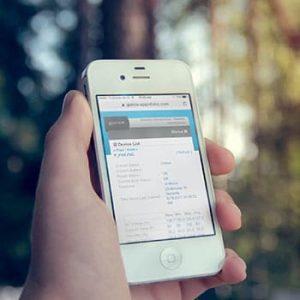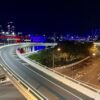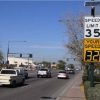With COVID-19 officially being labelled a pandemic and “social distancing” becoming an imperative in many places, a growing number of people are forgoing the office in order to work from home.
For some companies, including technology companies like ours where the infrastructure and policy needed for remote work are already in place, the transition has been relatively smooth. But what about organizations that don’t have these systems in place, whose efficiency depends on personnel being physically present at either an office or a field site?
The issue is particularly relevant for municipalities and transportation departments, who rely on data to monitor their systems, solve problems, and ensure public safety. While some forward-thinking cities have begun to upgrade their infrastructure to include connectivity on beacons and LED signs (allowing personnel to monitor and manage systems remotely), the vast majority still depend on manual site visits.
When unforeseen events occur like school closures or a system knockdown, traffic personnel have traditionally required either a citizen to call in, or a signal tech to drive out and check each system—but they don’t have to. New technologies like Carmanah’s StreetHub™ connected beacons and signs are making it easier than ever for municipalities to monitor their systems.
Here are three key benefits to adding connectivity to your city’s traffic safety infrastructure, whether you’re looking to create social distance or simply reduce costs and improve efficiency.
 1. Information at your fingertips
1. Information at your fingertips
Imagine being able to see the status of your entire network on a Google Maps interface on any device, at any time. Rather than relying on the public and technicians in the field to report issues, you’d be able to have visibility into the health of your systems immediately. If a system failed, you’d be able to see its exact location and what the issue was, allowing you to prioritize problems and deploy technicians efficiently.
That’s the reality of Carmanah’s connected beacons and signs. Connecting to a cloud-based supervisory system, allows engineers to quickly access the operational status of their school zone beacons, crosswalk systems, radar speed signs, and more via any device with an internet connection.
2. Remote scheduling and calendar control
When an event like the COVID-19 outbreak happens—or even during expected periods of change like holiday breaks—you may need to make adjustments to your systems’ schedules and programs. This is especially true for school zone beacons, since they’re typically only in effect at the start and end of the school day (and only on certain days of the week).
Rather than requiring someone to manually visit each beacon to upload new calendar data and ensure the beacons are flashing when they’re supposed to, remote monitoring means you can create and implement schedules and programs remotely. It also means that you can make mass adjustments, so rather than having to manually update every system in your district individually, you can push the change to dozens of systems at once.
3. Timely, actionable alerts
 Even the highest quality systems can experience technical issues, and it’s best to know about them sooner rather than later—especially when public safety is at stake.
Even the highest quality systems can experience technical issues, and it’s best to know about them sooner rather than later—especially when public safety is at stake.
Carmanah’s StreetHub beacons and signs can be configured to trigger alerts to appointed personnel 24/7 via text or email. The problem could be anything from a knock-down to a power failure—either way, knowing about it as soon as it happens helps speed response times and improve safety.
If you’re managing a traffic safety network across multiple locations, remote monitoring is invaluable in reducing costs, improving efficiency, and ensuring safety.
Do you have the right tools? Carmanah’s StreetHub connected beacons and signs can give you the visibility you need to ensure your traffic safety infrastructure remains operational and optimized when you need it most.
Get started with StreetHub


